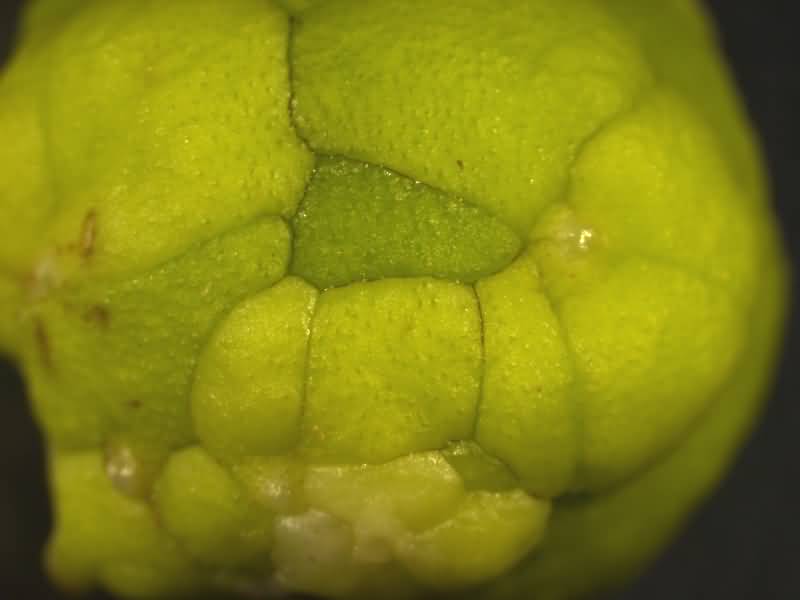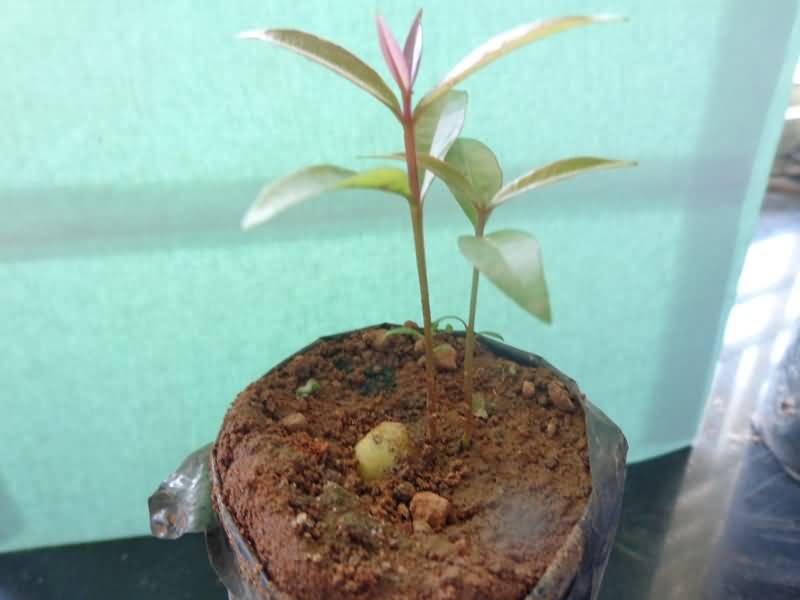बागवानी में पॉलीएब्रीयोनी या बहुभ्रूणता और इसकाा महत्व में
Polyembryony is the occurrence of more than one embryo in a seed which consequently results in the emergence of multiple seedlings. The additional embryos result from the differentiation and development of various maternal and zygotic tissues associated with the ovule of seed.
Earlier, polyembryony is said to have an abnormal feature but now it is considered as a desirable character in citrus, mango, jamun, rose apple, almond, etc. to obtain true to type planting material.
 In the usual process of plant reproduction, egg cell (female) of ovule fertilizes with the male gamete which in turn culminates in embryo (zygotic). On the other hand, in some of the crops, somatic cells of ovule (usually nucellus) start producing embryo without fertilization results in the occurrence of more than one embryo in the seed (polyembryony).
In the usual process of plant reproduction, egg cell (female) of ovule fertilizes with the male gamete which in turn culminates in embryo (zygotic). On the other hand, in some of the crops, somatic cells of ovule (usually nucellus) start producing embryo without fertilization results in the occurrence of more than one embryo in the seed (polyembryony).
The formation of embryo without sexual process is called apomixis (Apo=away from+ mixis = act of mixing) and seed is called apomictic seed, whereas the condition is called polyembryony.
In most of the cases, sexual embryo and nucellar embryo developes simultaneously which is known as facultative polyembryony. Polyembryony was first reported by Leeuwenhoek in citrus as early as 1719 and the different cases of polyembryony in plants were studied by Braun in 1859.
In 1878 Strasburger demonstrated the formation of plural embryos in many genera of angiosperms. It has become apparent that polyembryony is not an abnormal feature but rather a desirable character.
About 244 species of 144 genera belonging to 59 angiosperm families are reported to exhibit either polyembryony.
Among different ways of polyembryony, activation of some sporophytic cells of the ovule in the formation of embryo is more common. The embryos arising from the maternal sporophytic cells (outside the embryo sac) are called adventive embryos.
The maternal cells which involves in embryo development are nucellus and integument. The embryo develop from nucellus is called nucellar embryony which is common feature in the families of horticultural importance. Polyembryony in horticultural crops is associated with nuceller embryony because it frequently results in polyembryonic seeds from which multiple seedlings germinate.
Classification of polyembryony
Polyembryony may be classified on the basis of frequency.
- Strictly polyembryonic – Plant species in which the frequency of multiple embryos in less than 7% is described as strictly polyembryonic.
- Nearly monoembryonic – In case of nearly monoembryonic plant species the frequency of polyembryony varies between 6-10%.
- Polyembryonic - If the per cent of multiple seed is more than 10% this condition is called polyembryony and plants are called polyembryonate.
Polyembryony may also be classified on the basis of genetic composition.
- Gametophytic – Multiple embryos arises from the gametic cells of the embryo sac (synergid, antipodal) after or without fertilization. In this case haploid embryos are formed.
- Sporophytic : When multiple embryos arise either from zygote or from sporophytic cells of ovule (nucellus, integument) and the resulting embryo will be diploid. Hence citrus, mango and jamun exhibit true and sporophytic polyembryony.
Polyembryonate crops
Among horticultural crops, citrus, mango, jamun, rose apple, almond, peach, onion, etc are polyembryonic in nature. However citrus is the most important group exhibiting these traits. Except Citrus grandis (pummelo), C. latifolia (Tahiti lime) and Citrus medica (Citron) all other species are polyembryonic.
In case of mango (Mangifera indica), polyembryony is variety-dependant. Bappakai, Chandrakaran, Kensington, Kitchner, Kurukkan, Muvandan, Mylepelian, Nekkare, Olour, Peach, Prior and Starch are polyembryonic while mango varieties of commercial importance are monoembryonic.
Most of the polyembryonic mango varieties are used as root stocks as they have poor fruit quality. Polyembryony is also common in jamun (Syzygium cumini) and rose apple (Syzygium jambos).
Degree of polyembryony
Number of embryos varies with species and varieties. Seeds of highly polyembryonic species contain even more than 8 embryos. However the occurrence of 2-4 embryos is common. The intensity of occurrence of seeds containing multiple embryos may range up to 70% in highly polyembryonic species.
The emergence of seedlings is not directly correlated with the number of embryos. Usually less number of seedlings is emerged with respect to the number of embryos. The intensity of occurrence of multiple seedlings increases with the increase in the number of embryo.
In citrus, the occurrence of one seedling/seed was more than 50% whereas the intensity of emergence of two seedlings/seed was 36.1%. The per cent of 3, 4, 5 and 6 seedlings/seed was 7.5, 1.8, 0.6 and 0.1% respectively.
Two seedlings/seed in rose apple Three seedlings/seed in rose apple
Identification of nucellar seedlings
In case of facultative polyembryony, both sexual and nucellar embryos are formed and they germinate in the form of seedlings. Between them only nucellar seedling possesses the genetic make-up of mother plant and are true to type but its morphological identification is difficult. However nuceller embryos can be distinguished from the zygotic embryo by their lateral position in the embryo sac, irregular shape, and lack of suspensor.
The zygotic seedlings are frequently smaller than nucellar seedlings but variation enough in height or size alone could not be used as a criterion for selection. In mango zygotic seedlings are vigorous and possessed big cotyledons. Visual identification of nucellar seedlings is not an effective method, thus it becomes often necessary to grow seedlings for 4-5 years to fruiting before nucellar seedlings can be distinguished from zygotic ones.
In citrus, zygotic seedling can also be identified if one variety is crossed with trifoliate orange as the zygotic seedlings will have trifoliate leaves. For a more rapid advance in the propagation program, it is necessary to identify zygotic seedlings at an early stage (as a seedling) and for this purpose biochemical and molecular methods are used.
Since the identification of embryos with isozyme markers is influenced by the environment, as well as by the stage of development of the plant and its organs, making this method unreliable for identification. Recently, molecular techniques such as RAPD, RFLP, and SSR are available which give reliable results.
Significance of polyembryony
- The adventives embryos develop from nucellar embryo provide uniform seedlings for root stocks which yield consistent results in fruit production.
- The nucellar seedling as a root stock has a tap root and, therefore develops a better root system.
- The nucellar seedlings show a restoration of the vigour lost after repeat vegetative propagation.
- Polyembryony has ecological significance as it increases the probability of survival under varied conditions.
- Nucellar polyembryony is the only practical approach to raise virus-free clones of polyembryonatic citrus species in nature.
- Disease-free plants can also be obtained through nucellar embryo culture.
In spite of significance in plant propagation, polyembryony has a drawback as it interferes with the hybridization programme. In hybridization, zygotic embryo is the outcome, but polyembryony hampers the growth of zygotic embryo and thus affects the hybridization in plants.
Authors:
Kundan Kishore
Central Horticultural Experiment Station (ICAR-IIHR)
Aiginia, Bhubaneswar -751 019, Odisha
E-mail -


